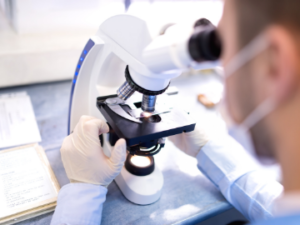The Connected Device Journey
Join industry experts from Nelson Labs, Sterigenics, and Regulatory Compliance Associates (RCA) for a free, 3-day virtual symposium May 13-15 where we explore the full product lifecycle of connected and wearable medical devices. From R&D, product design to sterilization, regulatory approval, and launch — our experts will walk you through the key considerations that can make or break the successful launch of your connected device.
Click here to Learn More And Register
Day 1: From Concept to Clinical Trials
This day sets the foundation by exploring early-stage development and pre-clinical readiness for connected devices. Experts will discuss R&D strategies, packaging and sterilization selection, and regulatory requirements.
Meeting Agenda (Please note, times listed below are in Eastern Time Zone)
11:00 AM – 12:00 PM So you think you’ve got a connected medical device? Development of a Connected Device
12:00 PM – 1:30 PM Packaging and Sterilization Modality Selection for Connected Devices
5-minute BREAK
1:35 PM – 2:05 PM Design Development Pitfalls in Connected Devices (30 min.)
2:05 – 3:05 PM Biocompatibility Evaluation, including a discussion on E&L for Medical Devices
3:05 – 3:30 PM 510(k) Marketing Submissions and Predetermined Change Control Plans
5-mintue BREAK
3:35 PM – 4:15 PM Live Q&A
Register for Day 1
Day 2: Scaling for Production Success
This day focuses on production processes, quality management, and preparing for scalable manufacturing while ensuring regulatory compliance and most importantly, cybersecurity and data integrity.
Meeting Agenda
11:00 AM – 11:30 AM Does your Quality Management System have the right capabilities to ensure that your XBU Connect Device will be safe and effective?
11:30 AM – 12:30 PM Sterilization Process Design for Connected Devices
5-minute BREAK
12:35 PM – 1:35 PM Regulatory Requirements for Medical Device Cybersecurity by FDA’s CDRH and EU’s MDR & IVDR
1:35 PM – 2:35 PM Software Development for Connected Devices
2:35 PM – 3:05 PM Medical Device Data Integrity and Accessibility Concerns
5-minute BREAK
3:10 PM – 4:00 PM Live Q&A
Register for Day 2
Day 3: Sustaining Excellence Post-Approval
The final day tackles post-approval challenges, including crisis management, supplier oversight, and change management.
Meeting Agenda
11:00 AM – 11:30 AM Common Submission Pitfalls and Best Practices
11:30 AM – 12:00 PM Supplier Quality Management Risks
12:00 PM – 12:30 PM Crisis Management and Recalls in Connected Devices
5-minute BREAK
12:35 – 1:35 PM Change Management
1:35 – 2:35 PM Live Q&A
Register for Day 3








 Anita Michael – Executive Principal Consultant, Pharma Compliance, Regulatory Compliance Associates
Anita Michael – Executive Principal Consultant, Pharma Compliance, Regulatory Compliance Associates
 A scoring table can be useful for determining whether to include data. For example, data scored on factors such as device equivalency, application equivalency, similarity of operator, and demographic equivalency can be helpful during the analysis.
A scoring table can be useful for determining whether to include data. For example, data scored on factors such as device equivalency, application equivalency, similarity of operator, and demographic equivalency can be helpful during the analysis.